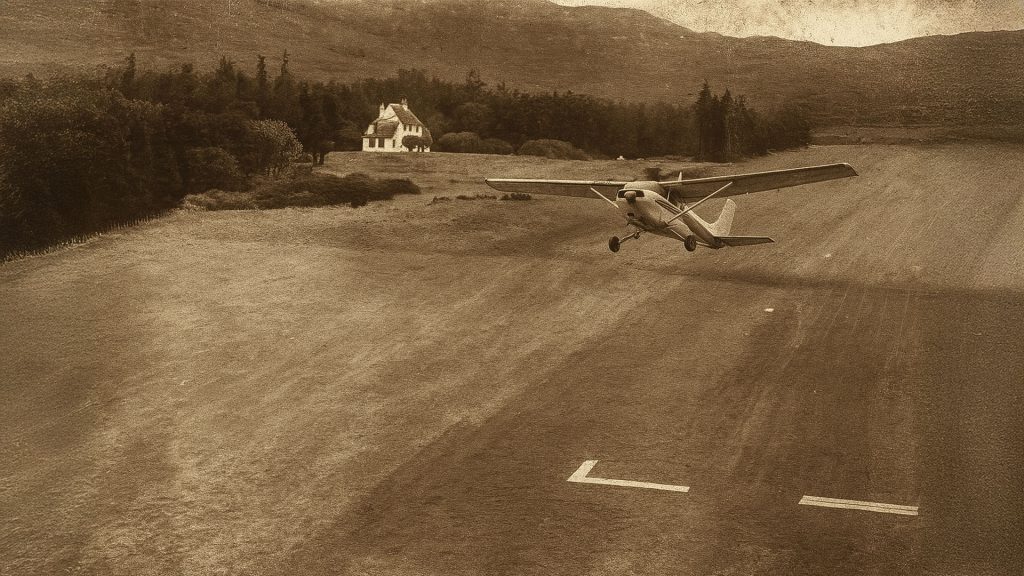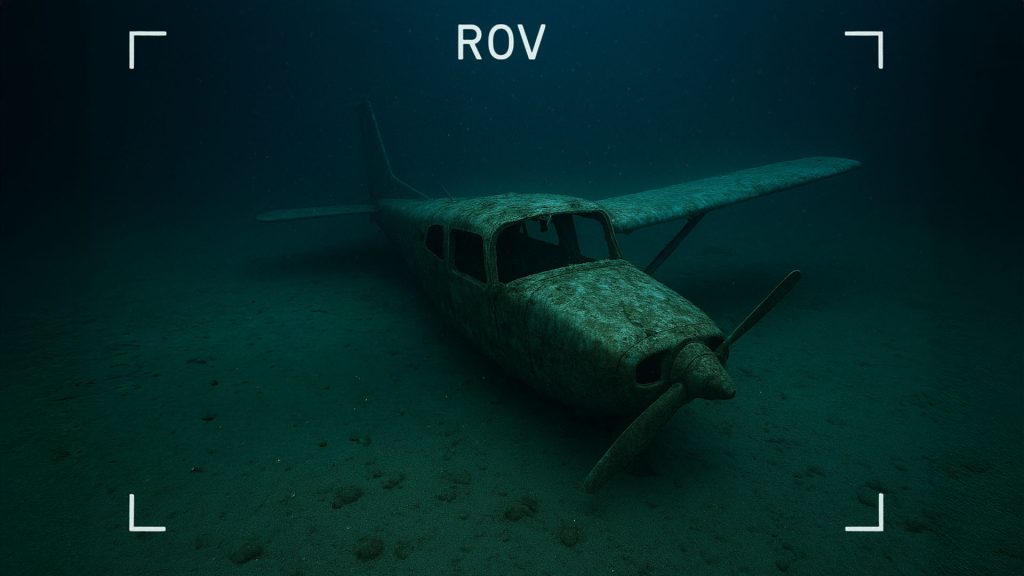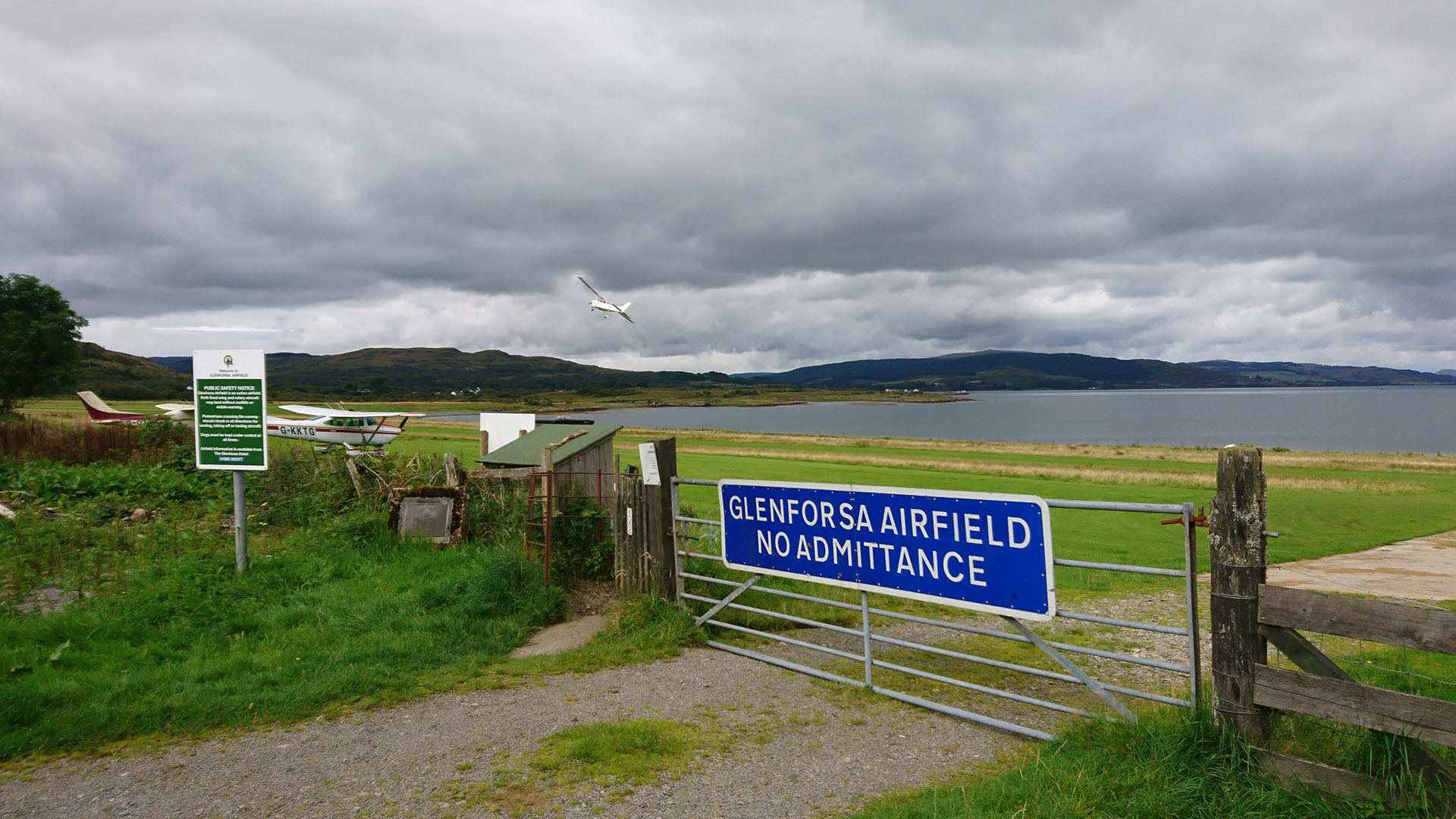History is filled with narratives of the vanished, the disappeared, and the inexplicably lost. From ships that sail into legend to individuals who simply cease to be, these enigmas hold a peculiar grip on our collective imagination. Among the most perplexing of these stories, woven into the rugged fabric of Scotland’s Isle of Mull, is the enduring mystery of Peter Gibbs and his vanished aircraft. On a dark Christmas Eve in 1975, a seemingly routine decision led to a disappearance that would baffle investigators for decades, leaving behind a body with no crash injuries, a tantalising underwater wreck, and a labyrinth of unanswered questions. The Great Mull Air Mystery remains, to this day, a chilling testament to the unforgiving nature of the elements and the profound allure of the unsolved.

The Man, The Machine, and The Fatal Decision
Our story centres on Norman Peter Gibbs, a 55-year-old London businessman with a distinguished past. A decorated former RAF Spitfire pilot, Gibbs had bravely served in World War II, a history that spoke volumes of his experience and composure under pressure. His aircraft was a small, two-seater red-and-white Cessna F150H, bearing the registration G-AVTN. It was a light aircraft, perfect for scenic flights over the dramatic Scottish landscape, a pursuit Gibbs clearly enjoyed during his frequent visits to Mull.

On Christmas Eve, 1975, Gibbs was staying at the Glenforsa Hotel on Mull, accompanied by his girlfriend, Felicity Grainger. After enjoying a festive dinner, Gibbs, perhaps seized by a sudden impulse or a pilot’s restless spirit, decided he wanted to take his Cessna for a solo flight. The conditions were far from ideal: the night was moonless, plunging the unlit Glenforsa Airfield into deep shadow, and Gibbs’s Cessna was not equipped for proper night-flying. Compounding these hazards, his pilot’s license had reportedly lapsed, and he was not wearing the spectacles he was supposed to use while flying. Furthermore, there were warnings about an approaching storm that evening. Despite these considerable obstacles and risks, he was determined. He borrowed two powerful torches from the hotel, which Grainger was instructed to use as makeshift landing lights to guide him back. With this improvised setup, Peter Gibbs climbed into his small plane, started the engine, and taxied towards the runway. Felicity Grainger watched as the distinctive red-and-white aircraft gathered speed, lifted off, and then, in the profound darkness of that winter night, disappeared from view behind a line of trees. It was the last time anyone would see Peter Gibbs alive, or definitively, his plane.

The Vanished Plane and The Breakthrough Body
The immediate aftermath of Gibbs’s disappearance was one of growing alarm. When the roar of the Cessna’s engine failed to return and the makeshift landing lights illuminated only empty sky, Felicity Grainger’s concern escalated, prompting her to alert the hotel staff. Within hours, a major search and rescue operation was launched. Police, mountain rescue teams, and local volunteers scoured the rugged terrain, the treacherous coastline, and the cold waters surrounding Mull. Every possible avenue was explored, but the vastness of the search area, combined with the challenging conditions, yielded nothing. There was no crash site, no debris field, no trace of the plane – as if the Cessna G-AVTN and its experienced pilot had simply vanished into thin air. The initial search was a frustrating, fruitless endeavour, deepening the mystery surrounding the Christmas Eve flight.
Four agonising months later, in April 1976, a critical, yet baffling, breakthrough occurred. Donald MacKinnon, a local shepherd tending to his flock on a remote hillside, stumbled upon a grim discovery. Lying across a fallen larch tree, approximately one mile (1.5 kilometres) from the Glenforsa Airfield, was the uninjured, yet decomposed, body of Peter Gibbs. The discovery shocked everyone, particularly because the area where his body was found had reportedly been searched thoroughly by both the shepherd and mountain rescue teams during the initial efforts, with no trace found at that time. An experienced pilot, his plane missing, yet his body found seemingly unharmed on land, far from any suspected crash site, and in an area previously checked.
A subsequent post-mortem examination in Glasgow only added to the layers of perplexity. Forensic analysis revealed only minor injuries on Gibbs’s body – nothing consistent with a violent impact from a plane crash or a fall from a significant height. Crucially, there was no evidence of prolonged immersion in salt water; no salt residue or marine organisms were found on his clothing or boots. The official cause of death was determined to be exposure. This finding presented an extraordinary paradox: if Gibbs had died of exposure after leaving his plane, where was the plane? And if the plane had crashed, why were there no crash-related injuries on his body? The finding of Peter Gibbs’s body, far from solving the mystery, only deepened it, creating a perplexing schism between the pilot’s fate and that of his aircraft.
The Underwater Claims – Was The Plane Found?
For years after the discovery of Gibbs’s body, the fate of his Cessna remained a subject of intense speculation. Then, over a decade later, new information emerged that seemed to offer a potential answer, yet ultimately introduced more questions. In September 1986, two clam divers, brothers Richard and John Grieve, reported a remarkable find on the seabed in the Sound of Mull, off the coast of Oban. They claimed to have discovered a small red-and-white plane, identifying it as Gibbs’s Cessna G-AVTN. According to their account, both wings of the aircraft were missing, suggesting a forceful impact. This discovery, while unofficial and unconfirmed by authorities at the time, seemed to provide a missing piece of the puzzle: the plane had crashed into the sea.
The story resurfaced in February 2004, when Royal Navy minesweepers, conducting routine coastal mapping operations in the same general area off Oban, independently located a plane approximately 30 meters (about 100 feet) underwater. Remote Operated Vehicle (ROV) footage captured images of a small aircraft, clearly identifiable as a light plane, resting on the seabed. The footage showed one wing still attached, while the other appeared to be missing. The windscreen was gone, and the cabin doors were reportedly locked.

While initially hailed as the likely discovery of Peter Gibbs’s Cessna, discrepancies soon emerged. The divers had reported both wings missing, whereas the navy footage showed one still attached. More significantly, the underwater wreck was never officially recovered and definitively identified as G-AVTN. Compounding the ambiguity, some experts and local historians suggested that the 2004 find might not have been Gibbs’s Cessna at all, but rather the wreckage of an RAF Catalina flying boat that went down during World War II in the same vicinity. Without official recovery and forensic examination of serial numbers or other identifying marks, the ambiguity persists. The plane’s definitive fate – resting on the seabed as G-AVTN, or still out there somewhere – remains unconfirmed, leaving a critical piece of the puzzle tantalisingly out of reach.
Unraveling the Theories – What Could Have Happened?
The enduring mystery of Peter Gibbs and his vanished Cessna has naturally given rise to a multitude of theories, each attempting to reconcile the perplexing inconsistencies of the case.
The most widely considered theory posits that Gibbs’s plane crashed into the Sound of Mull. In this scenario, he would have either managed to exit the aircraft before or during a relatively ‘soft’ water landing, or perhaps, miraculously, escaped from the sinking fuselage. He would then have had to swim to shore through the freezing December waters, a feat of incredible endurance and resilience, before staggering a mile up the hillside where his body was found. While this theory accounts for a potential underwater plane discovery, it struggles to explain the lack of marine evidence on his body or clothing, and the astonishing lack of physical injury from surviving a crash and subsequent hypothermic struggle. It also demands a superhuman effort of survival in conditions that would typically prove fatal very quickly.
Another, far less plausible, theory suggests some form of mid-air incident leading to an exit. However, light aircraft like the Cessna 150 are not designed for in-flight egress, and there’s no evidence of a parachute. This theory is generally dismissed due to its extreme unlikelihood and lack of supporting facts.
Perhaps the most compelling, though still incomplete, explanation revolves around pilot disorientation and exposure. Given the unlit airfield, the moonless night, the approaching storm, and Gibbs’s lack of night-flying instrumentation (including not wearing his prescribed spectacles), it is highly probable that he suffered from spatial disorientation shortly after take-off. In such conditions, an experienced pilot can quickly lose sense of their aircraft’s attitude and direction. He might have crashed on land, or made an emergency landing that was less violent than a typical crash, allowing him to survive the initial impact. He could have then stumbled out of the wreckage, perhaps concussed or disoriented, and wandered onto the hillside before succumbing to hypothermia and exposure. The absence of significant crash injuries on his body could be consistent with a low-speed impact or a ‘controlled’ crash landing into soft terrain, though no such wreckage was ever definitively found on land. The main hurdle for this theory remains the absolute absence of a confirmed land-based crash site.
Other, more speculative, theories involving foul play, smuggling operations, or even espionage have been floated, but these largely reside in the realm of fiction, lacking any concrete evidence to support them. The true complexity of the Great Mull Air Mystery lies in its refusal to conform to a single, coherent narrative. Every piece of evidence, from the uninjured body to the ambiguous underwater wreckage, seems to contradict another, preventing a definitive solution.

Conclusion – An Enduring Enigma
The Great Mull Air Mystery remains one of Scotland’s most perplexing and enduring cold cases. It’s a story defined by its contradictions: an unexplained death, an experienced pilot whose body is found seemingly untouched by a crash, while his plane’s fate is shrouded in underwater ambiguity. The festive cheer of Christmas Eve gave way to an unsettling void, leaving a family bereft and a community forever pondering the ‘what ifs’.
Why does this mystery endure? Perhaps it is the stark human element – the solitary pilot making a fateful decision in the dark of night, under compromised conditions (referencing the license, spectacles, and storm). Perhaps it is the dramatic contrast between the peaceful landscape of Mull and the terrifying unknown that unfolded above it. Whatever the reason, the tale of Peter Gibbs and his vanishing Cessna serves as a stark reminder of the unpredictable forces of nature and the limits of human investigation. Some mysteries, it seems, are simply destined to remain unsolved, forever whispering their secrets into the winds that sweep across the Isle of Mull.

